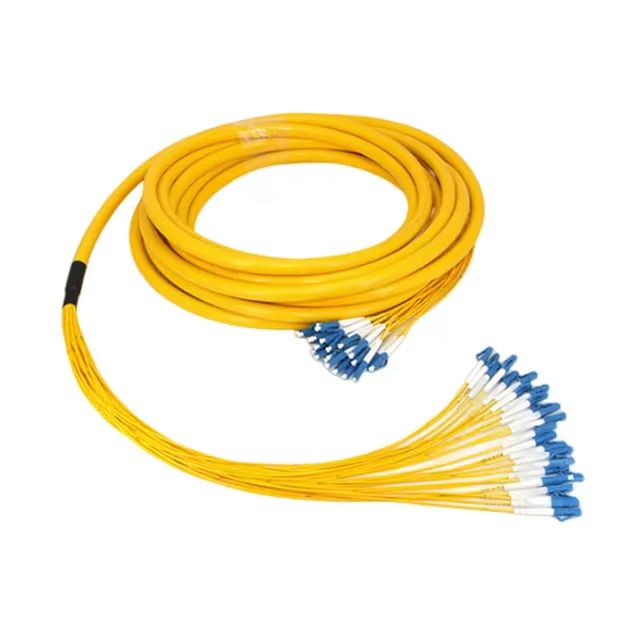Central Loose Tube Stranded Figure 8 Self-supporting Cable
GYXTC8S/GYXTC8A
Central Loose Tube Stranded Figure 8 Self-supporting Cable
Product Features
Self-supporting single steel wire structure of figure 8 provides high tensile strength.
Loose tube stranding cable core ensures the cable structure is stable.
Special tube filling compound ensures critical protection of the fiber and resists water.
The outer sheath protects the cable from ultraviolet radiation.
Small diameter and light weight make it easy to lay.
Resistant to high and low temperature cycle changes, resulting in anti-aging and a longer lifespan.
Optical Characteristics
| Fiber Type | Attenuation | 1310nm MFD(Mode Field Diameter) | Cable Cut-off Wavelength λcc(nm) | |
| @1310nm(dB/KM) | @1550nm(dB/KM) | |||
| G652D | ≤0.36 | ≤0.22 | 9.2±0.4 | ≤1260 |
| G655 | ≤0.4 | ≤0.23 | (8.0-11)±0.7 | ≤1450 |
| 50/125 | ≤3.5 @850nm | ≤1.5 @1300nm | / | / |
| 62.5/125 | ≤3.5 @850nm | ≤1.5 @1300nm | / | / |
Technical Parameters
| Fiber Count | Cable Diameter (mm) ±0.5 |
Messenger Diametor (mm) ±0.3 |
Cable Height (mm) ±0.5 |
Cable Weight (kg/km) |
Tensile Strength (N) | Crush Resistance (N/100mm) | Bending Radius (mm) | |||
| Long Term | Short Term | Long Term | Short Term | Static | Dynamic | |||||
| 2-12 | 8.0 | 5.0 | 15.5 | 135 | 1000 | 2500 | 1000 | 3000 | 10D | 20D |
| 14-24 | 8.5 | 5.0 | 16.0 | 165 | 1000 | 2500 | 1000 | 3000 | 10D | 20D |
Application
Aerial, Long distance communication and LAN, Indoor shaft, building wiring.
Laying Method
Self-supporting aerial.
Operating Temperature
| Temperature Range | ||
| Transportation | Installation | Operation |
| -40℃~+70℃ | -10℃~+50℃ | -40℃~+70℃ |
Standard
YD/T 1155-2001
Packing And Mark
OYI cables are coiled on bakelite, wooden, or ironwood drums. During transportation, the right tools should be used to avoid damaging the package and to handle them with ease. Cables should be protected from moisture, kept away from high temperatures and fire sparks, protected from over-bending and crushing, and protected from mechanical stress and damage. It is not allowed to have two lengths of cable in one drum, and both ends should be sealed. The two ends should be packed inside the drum, and a reserve length of cable not less than 3 meters should be provided.

The color of cable markings is white. The printing shall be carried out at intervals of 1 meter on the outer sheath of the cable. The legend for the outer sheath marking can be changed according to the user's requests.
Test report and certification provided.
If you're looking for a reliable, high-speed fibre optic cable solution, look no further than OYI. Contact us now to see how we can help you stay connected and take your business to the next level.

 0755-23179541
0755-23179541  sales@oyii.net
sales@oyii.net






